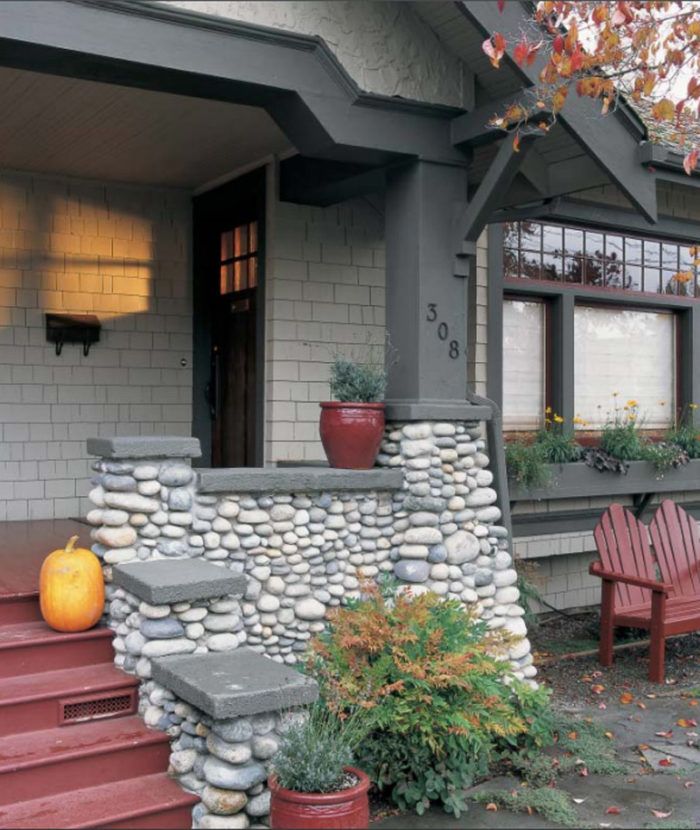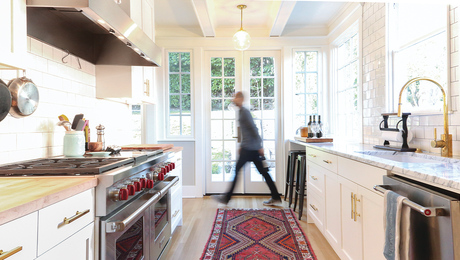Updating Classic America: Bungalows — From a Frog to a Prince
A Seattle couple breathes new life into a classic old-world charmer.

Synopsis: In an age when teardowns, scrape-offs, and wraparounds are radically altering the residential landscape and “McMansions” are the prevailing crop of our farm fields, people are awakening to the value of traditional American neighborhoods. Many of us are returning to what can be called classic American housing types — the Bungalow, the Colonial, the Cape, and the Ranch. We are drawn to their attention to materials, to details that would be prohibitively expensive today, and to attractive neighborhoods located close to downtowns and mass-transit lines.
In Updating Classic America: Bungalows, Caren Connolly and Louis Wasserman provide a history and overview, along with proven, tasteful design solutions for a variety of bungalow-style remodels, additions, renovations, and new construction. One such remodel, a “classic old-world charmer with the potential to be fabulous,” is featured in this excerpt from Chapter 2, “Remodeling Inside the Walls.”
How would you respond to a classified ad describing a Bungalow as,“Not for the faint hearted…needs lots of work…classic old-world charmer with potential to be fabulous”?
Gary and Beth jumped at the opportunity to transform this frog of a Bungalow, listed in a Seattle newspaper, back into a prince. As a contractor, Gary was particularly interested in the home’s resale potential the neighborhood’s properties were appreciating in value because of their location and their particularly fine craftsmanship. But when Gary showed the house to Beth, she saw more than a real estate investment, and they agreed that this could be their new home. They had been looking for a traditional house that could accommodate their modern lifestyle, and Gary, as both a visionary and a romantic, wasn’t discouraged by the fact that the 1912 structure needed a great deal of work.
Taking It Down to the Studs
The rooms were filthy, thanks in part to a major rodent infestation. The smell was so noxious that the house had to be treated with the procedures used to remove odor from fire and smoke damage it was gutted down to the studs, stripped of all paint, and sprayed with a shellac-based primer.
A few happy surprises turned up during the process of deconstructing the house. Twin windows were discovered on either side of the fireplace, where they had been concealed for years within the walls. In the dining room, a dropped acoustic-tile ceiling was torn down to reveal the original beams. It took a worker more than two weeks to strip the paint from the woodwork in the dining room alone, revealing the beautiful grain of the Northwest fir. Fortunately, the plate rail and built-in sideboard were in salvageable shape. Replacements for the damaged woodwork had to be milled on site because the profile (the shape, in cross section) wasn’t commercially available. Gradually, the dining room was returned to its original quiet grandeur, with the beams overhead, stained-wood cabinetry and flooring, and the choice of a particularly rich hue of paint.
The Art Deco brick fireplace in the living room didn’t fit the Craftsman image that Gary and Beth wanted. They chose to replace it with one of stone, adding a custom fir mantel. A family portrait hangs above the fireplace with honey-toned fir paneling as a backdrop. Built-in bookshelves were fitted into the spaces on either side of the fireplace, no doubt replacing units that long ago had been removed.
Gary had in mind that the living room would be for daily family use reading, talking, gathering and he was careful not to overwhelm the space with too much dark wood. The white trim bounces available natural light into the room. When doing a restoration, restraint is important. Slavish attention to faithful details can give a house a themed look that doesn’t feel authentic. Remember, Bungalows were originally built to accommodate the way people actually live, not to impress the neighbors.
For floor plans, photos, and more information on how this bungalow was restored, click the View PDF button below.

























